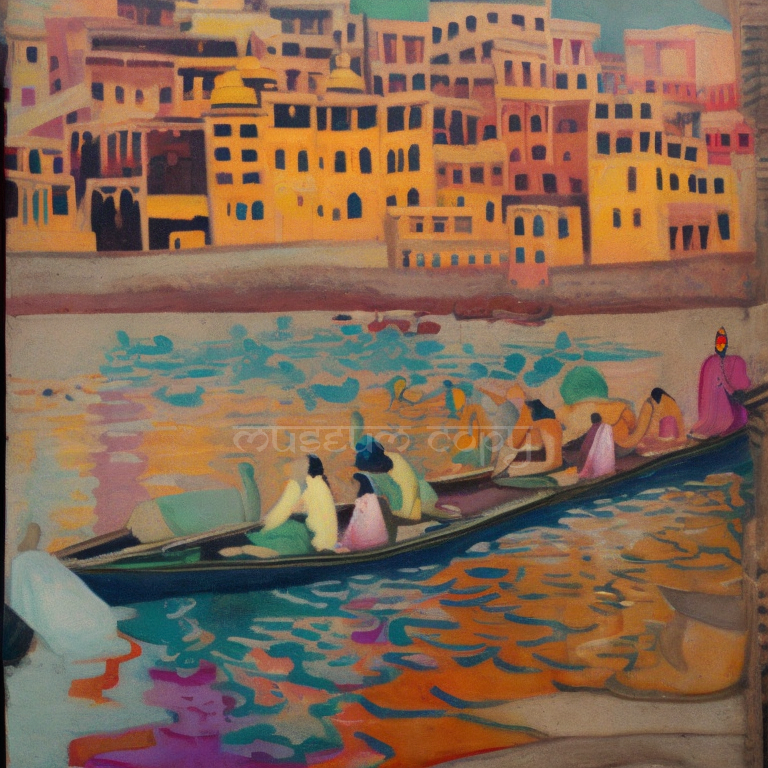Profile: Amrita Sher-Gil
•

Amrita Sher-Gil was an exceptional Indian artist and a pioneer of modern Indian art. Born on January 30, 1913, in Budapest, Hungary, she was the daughter of a Hungarian-Jewish opera singer and a Sikh aristocrat from Punjab, India. Amrita's multicultural background greatly influenced her artistic sensibilities, allowing her to blend different cultural influences and create a unique style that resonated with viewers worldwide.
At a young age, Amrita Sher-Gil displayed remarkable talent and a deep passion for art. She received formal training in art from various prestigious institutions in Europe, including the École des Beaux-Arts in Paris and the Santa Annunziata Academy of Fine Arts in Florence. These experiences exposed her to different art movements, techniques, and styles, which she skillfully incorporated into her work.
Amrita's paintings often depicted the lives of Indian women, peasants, and rural landscapes. She had a keen eye for capturing the essence of her subjects, portraying their emotions, struggles, and the complexities of their lives. Her art went beyond mere representation; it evoked a strong sense of empathy and compassion, reflecting her deep connection to the people and culture of India.
One of Amrita Sher-Gil's most famous works is "Three Girls," which showcases her ability to convey a range of emotions through her subjects' facial expressions and body language. Another notable piece is her self-portrait, which reveals her introspective nature and her exploration of identity and selfhood. "The Bride's Toilet" and the "Young Girls" series also exemplify her skillful use of color, composition, and storytelling.
Amrita Sher-Gil's artistic contributions were highly regarded during her lifetime, and she is often referred to as the "Indian Frida Kahlo" due to the striking similarities in their styles and personal narratives. She was deeply influenced by the post-impressionist and expressionist movements, yet she was able to infuse her work with a distinct Indian aesthetic and cultural context.
Tragically, Amrita's life was cut short at the age of 28 when she passed away on December 5, 1941, in Lahore, British India (now Pakistan). Despite her short career, she left a lasting impact on the Indian art scene. Her works continue to inspire and influence generations of artists, and she is celebrated as one of India's most important modern artists. Amrita Sher-Gil's legacy lies not only in her captivating paintings but also in her ability to bridge the gap between different cultures and create art that speaks to the universal human experience.
At a young age, Amrita Sher-Gil displayed remarkable talent and a deep passion for art. She received formal training in art from various prestigious institutions in Europe, including the École des Beaux-Arts in Paris and the Santa Annunziata Academy of Fine Arts in Florence. These experiences exposed her to different art movements, techniques, and styles, which she skillfully incorporated into her work.
Amrita's paintings often depicted the lives of Indian women, peasants, and rural landscapes. She had a keen eye for capturing the essence of her subjects, portraying their emotions, struggles, and the complexities of their lives. Her art went beyond mere representation; it evoked a strong sense of empathy and compassion, reflecting her deep connection to the people and culture of India.
One of Amrita Sher-Gil's most famous works is "Three Girls," which showcases her ability to convey a range of emotions through her subjects' facial expressions and body language. Another notable piece is her self-portrait, which reveals her introspective nature and her exploration of identity and selfhood. "The Bride's Toilet" and the "Young Girls" series also exemplify her skillful use of color, composition, and storytelling.
Amrita Sher-Gil's artistic contributions were highly regarded during her lifetime, and she is often referred to as the "Indian Frida Kahlo" due to the striking similarities in their styles and personal narratives. She was deeply influenced by the post-impressionist and expressionist movements, yet she was able to infuse her work with a distinct Indian aesthetic and cultural context.
Tragically, Amrita's life was cut short at the age of 28 when she passed away on December 5, 1941, in Lahore, British India (now Pakistan). Despite her short career, she left a lasting impact on the Indian art scene. Her works continue to inspire and influence generations of artists, and she is celebrated as one of India's most important modern artists. Amrita Sher-Gil's legacy lies not only in her captivating paintings but also in her ability to bridge the gap between different cultures and create art that speaks to the universal human experience.